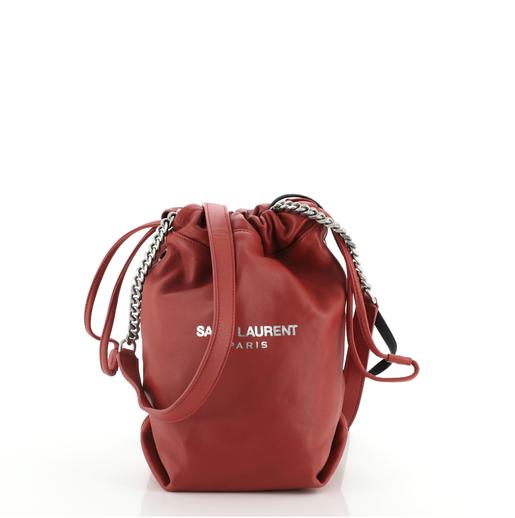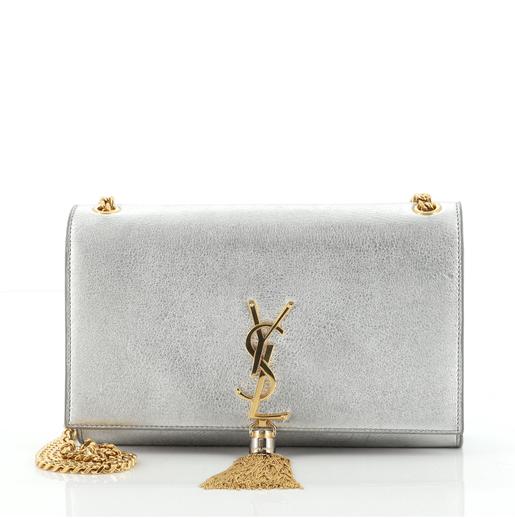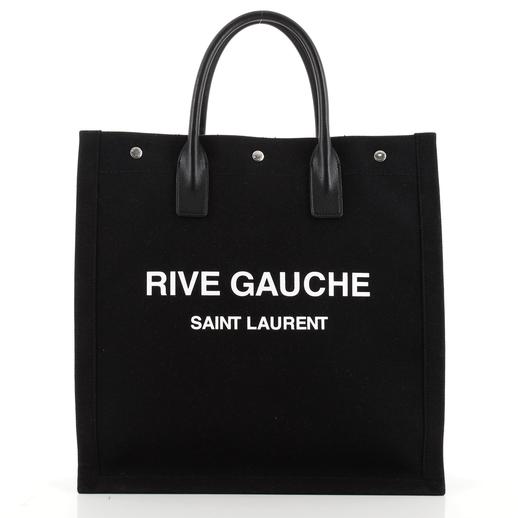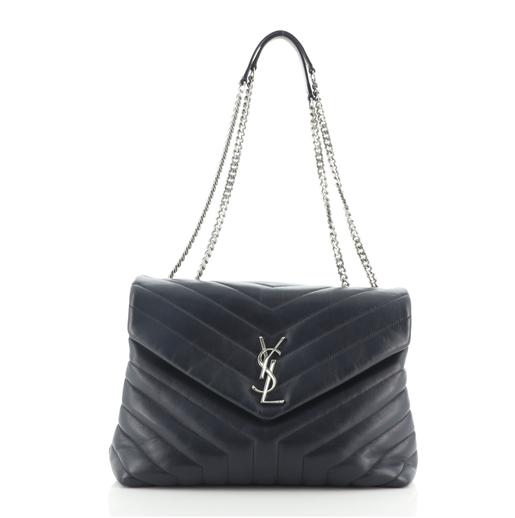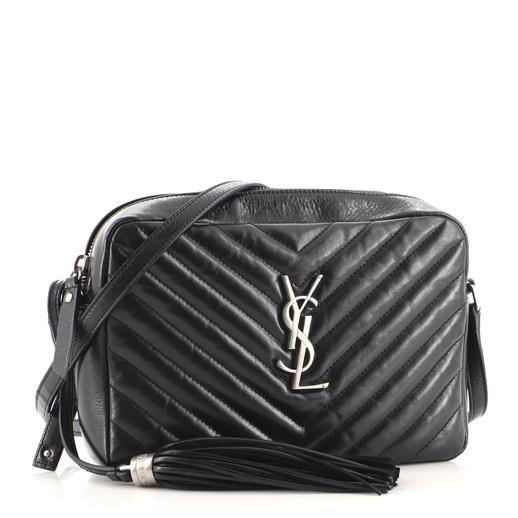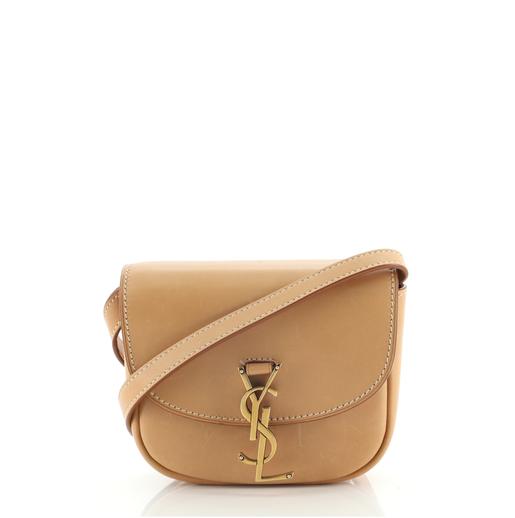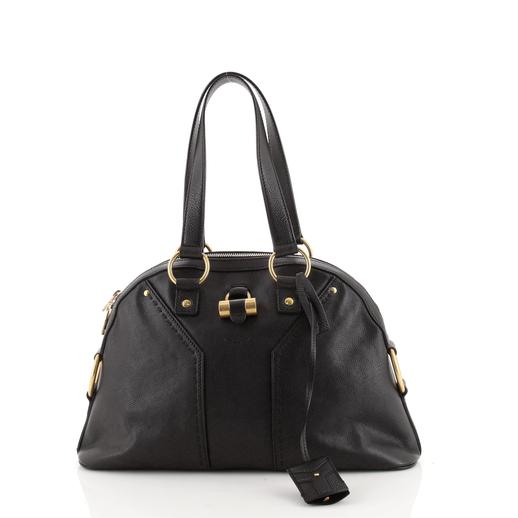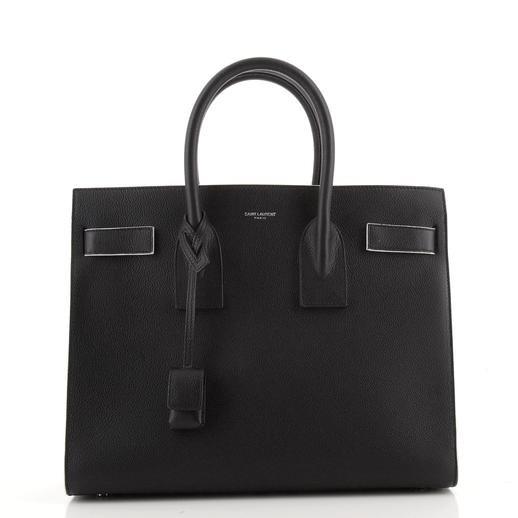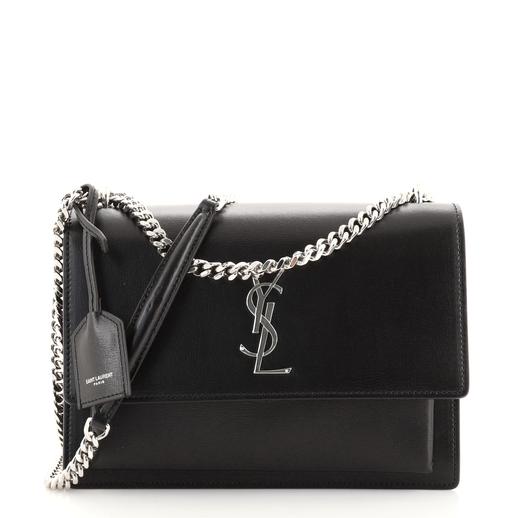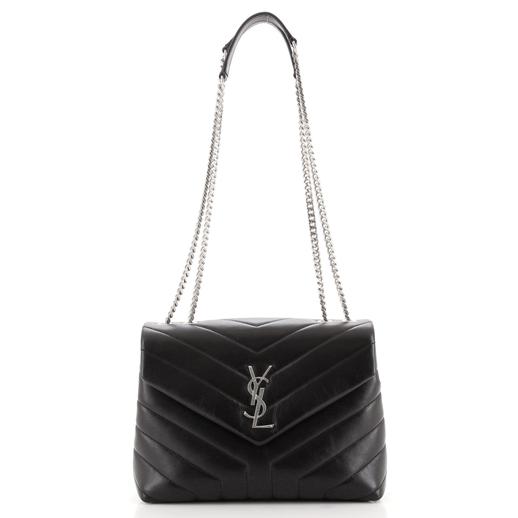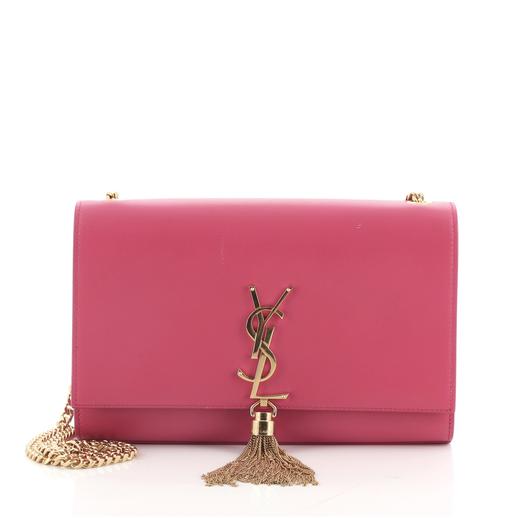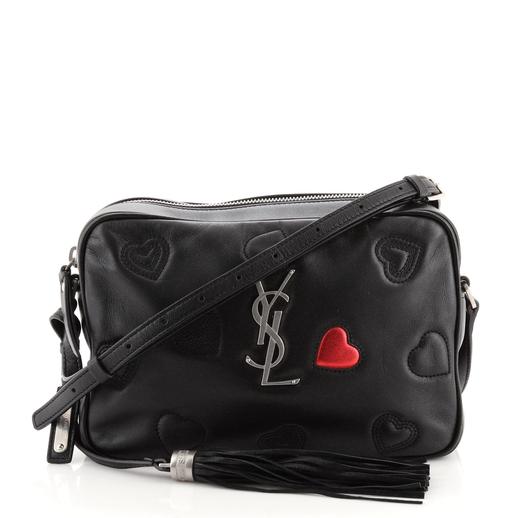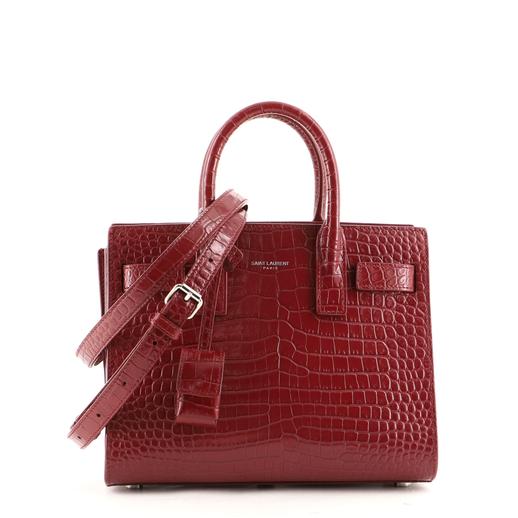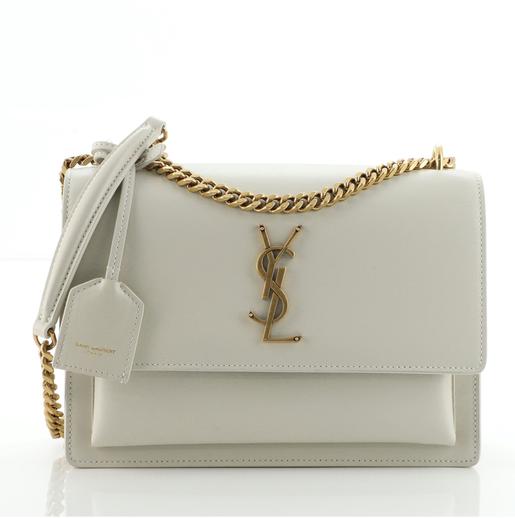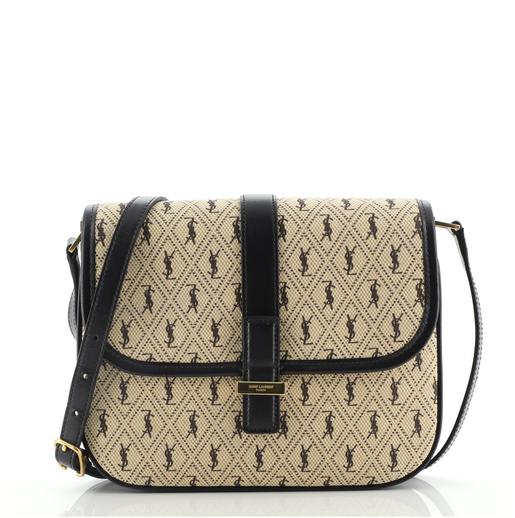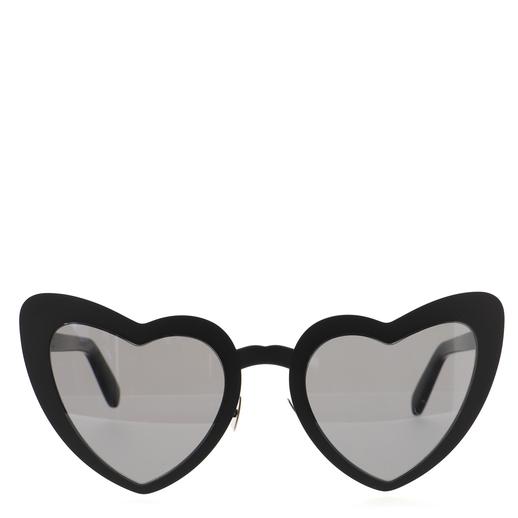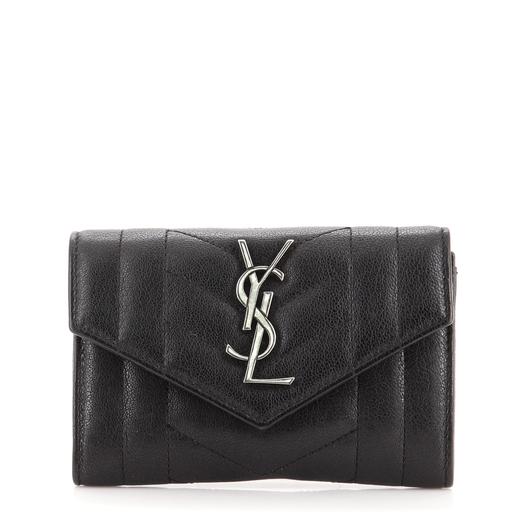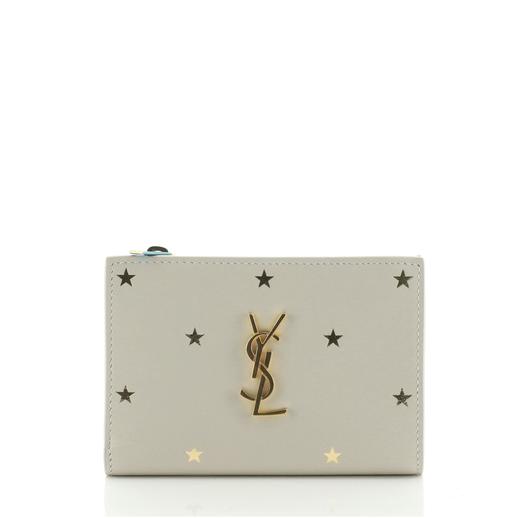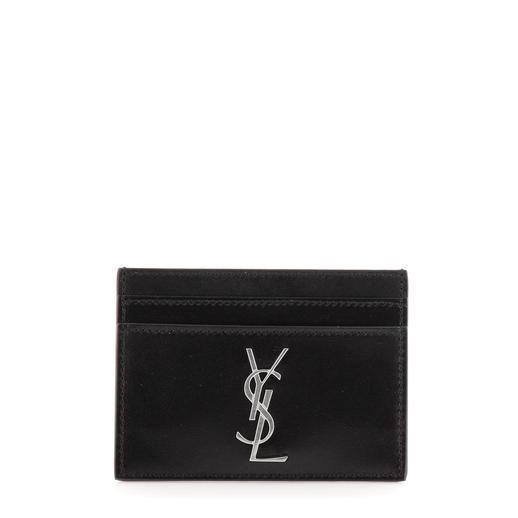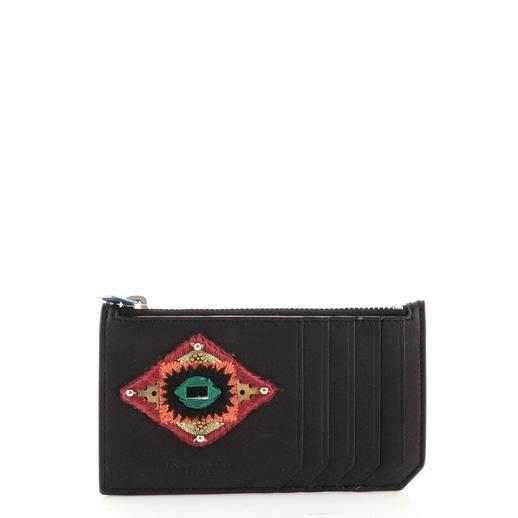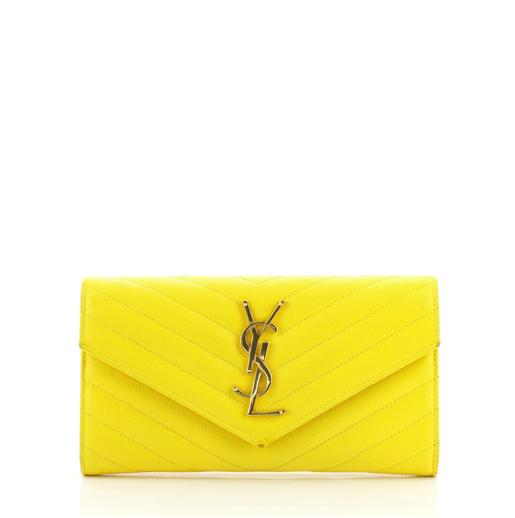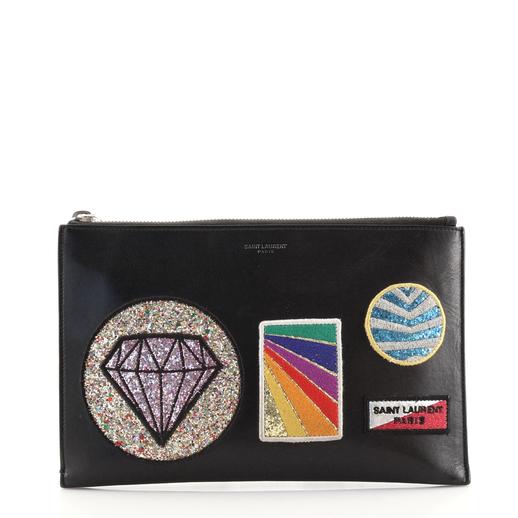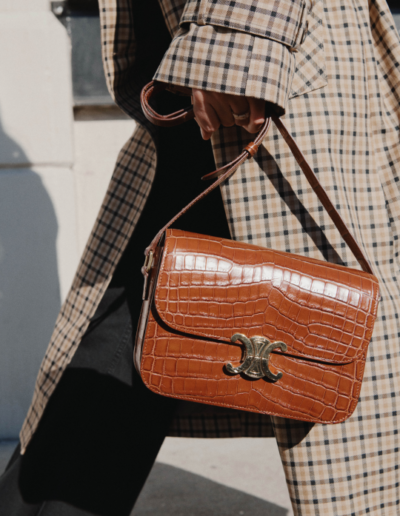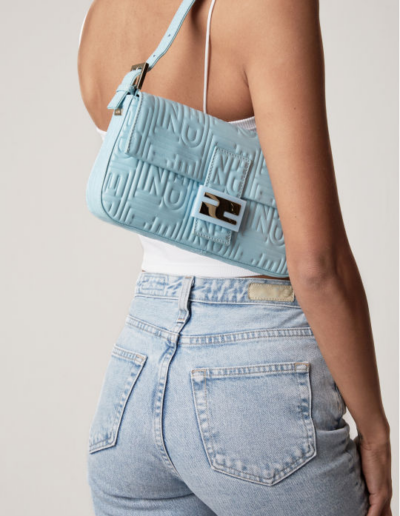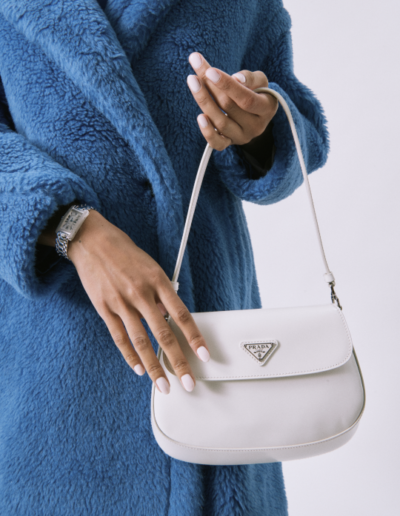DESIGNER 101
Saint Laurent 101:
A History
By Taylor M, Jun 14, 2021
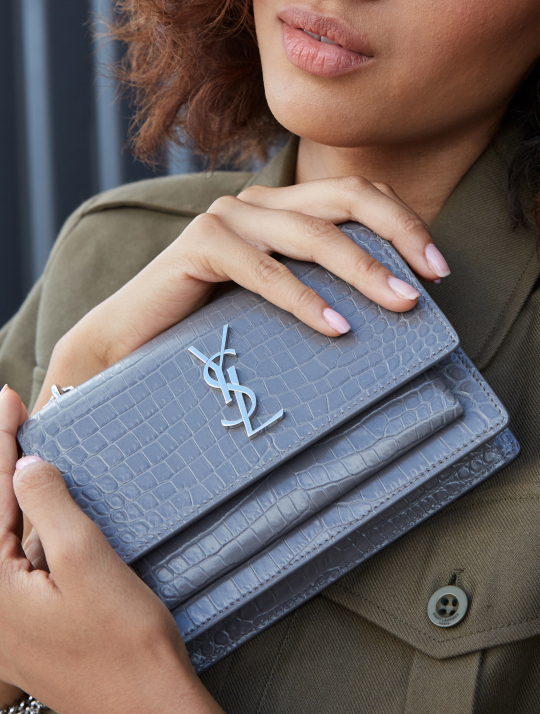
Yves Saint Laurent played by his
own rules.
The designer entered the fashion world at a young age, and his influence redefined the way that women dress. His skillful eye broke boundaries, dressing women in menswear. Saint Laurent the label represents an edgy, youthful style that captivates the masses to this day.
“I created the contemporary woman’s wardrobe.”
Yves Saint Laurent
Early Life
Yves Saint Laurent was born in Oran, Algeria in 1936. Long after, he made parallels between his upbringing in North Africa and Paris, describing the art and the culture of the city as vastly influential to the creative development of both himself and his comrades. Saint Laurent’s earliest designs are preserved in his old studio at 5 avenue Marceau, which is now the Musée Yves Saint Laurent Paris—a must see if you meander into the 8th Arrondissement). His earliest designs, which are displayed there, consist of sketches and paper dolls clothed in fabrics that he snipped from his mother’s textiles. Having parents that were both trained musicians, Saint Laurent’s favorite childhood pastime was producing plays with his sisters in which he would take the role of a couturier and play the head designer.
In 1953, when Saint Laurent was 16, he entered the International Wool Secretariat competition, now known as the Woolmark Prize, and a jury which included Hubert de Givenchy and Christian Dior awarded the young designer third prize. The following year, he entered again, and a jury composed of names like Pierre Balmain and Givenchy awarded him first place in the dress category, and a 21-year-old Karl Lagerfeld first place in the coat category. Saint Laurent’s work promptly circulated within the industry, and Dior was impressed by the young talent after French Vogue editor in chief Michel de Brunhoff showed Saint Laurent’s sketches to Dior, who hired Saint Laurent as an assistant in his studio. Saint Laurent started to work at the house of Dior when in 1955 he was all but 18, after only one term at the Ecole de la Chambre Syndicale, and this was only the beginning for his legendary career.
The Dior Years
Within the house of Dior, Saint Laurent quickly acquired the confidence of his instructor and in turn, took on more responsibility, like designing the headdresses for a 1956 costume ball called Le bal des têtes. In 1957, Saint Laurent was promoted to Dior’s assistant, tasked with designing some 40 dresses for each collection. In October that same year, Dior passed away from a heart attack at 52. At 21, Saint Laurent’s childhood dream of becoming a couturier came true when he was named Dior’s successor. His first Dior show in 1958 deviated from all that his predecessor designed, giving more fluid shape to womenswear in breathable silhouettes.
Saint Laurent’s first collection at Dior was embraced by critics and is most remembered by the Trapeze dress, a larger silhouette where the woman’s body disappeared beneath the fabric, and the antithesis of Dior’s cinched-waist jackets and dresses. In 1960, Saint Laurent was drafted into the army, which is said to have taken a toll on the designer’s mental health. Saint Laurent’s stint only lasted through training camp, and he ended up being hospitalized after a mental breakdown. It was while in the hospital that he learned he would not be returning as Dior’s head designer and that Marc Bohan would take his place.
The Birth of Yves Saint Laurent the Fashion House
The young, but experienced designer had an eye for menswear on women —he knew how to fit the female figure in more masculine silhouettes in a way that highlighted her sexuality and figure in new ways. With the 680,000 francs Dior paid Saint Laurent under breach of contract he promptly invested into his own brand a year, along with Jesse Mack Robinson, from whom Bergé negotiated an investment of $70,000. In his first collection in January 1962, Saint Laurent introduced a women’s peacoat that was inspired by naval uniforms. A.M. Cassandre designed the label’s iconic monogram Yves Saint Laurent logo in 1963, further adding to the brand’s identity. In 1966, Saint Laurents introduced the iconic Le Smoking tuxedo suit, which was a defining moment for the house as he revolutionized the idea of menswear as womenswear.
Rive Gauche
Yves Saint Laurent named his first store Saint Laurent Rive Gauche for its place on the left bank of the Seine River, a part of Paris where young creatives lived and flourished. The store’s opening show in 1969 marked the first time that a couturier in France had successfully launched a prêt-à-porter or ready-to-wear line. The space had previously served as an antique store, so it held a great deal of history and charm within its walls. The primary collection at the store’s launch was embraced by Parisian youth and was even compared to Chanel in terms of innovation, launching Yves Saint Laurent the brand into the mainstream where it would remain for years to come. Celebrities and famous models both attended and participated in the opening of the store, and customers waited for hours in line to purchase the apparel. The words “Rive Gauche” remain a staple phrase seen even today on Saint Laurent YSL’s popular shopping bag totes.
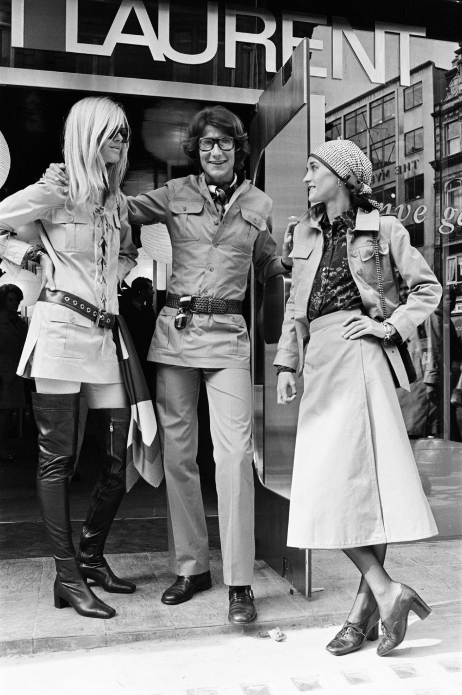
Saint Laurent at Rive Gauche boutique with muses Catroux and De la Falaise
Cultural Connoisseur
“I have been to every country in my dreams. All I have to do to blend into a place or a landscape is to read a book, or look at a picture, and then use my imagination.”
Yves Saint Laurent
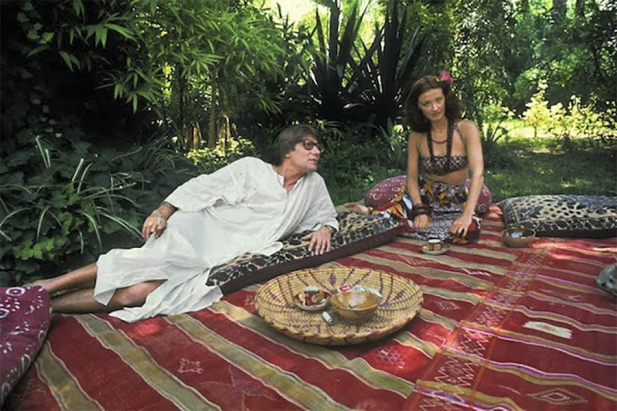
Yves Saint Laurent at his home in Marrakech. Courtesy Pinterest.
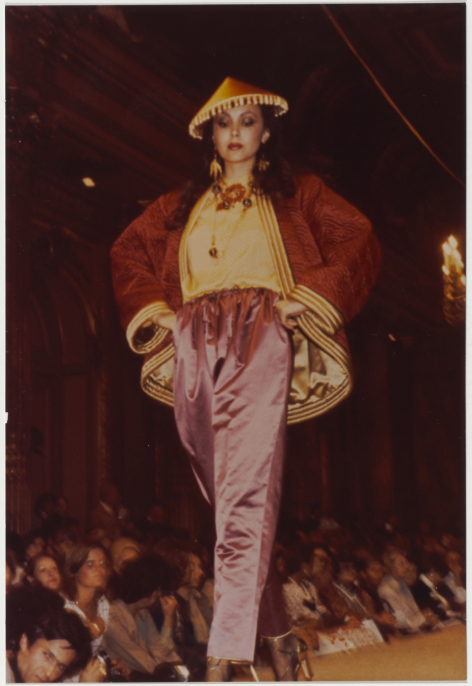
A look from Yves Saint Laurent’s fall 1977 Les Chinoises collection. Courtesy museeyslparis.com.

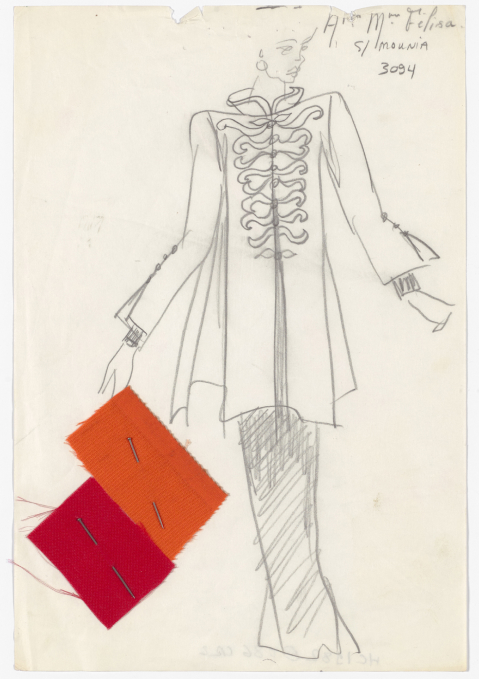
An India-inspired sketch from Yves Saint Laurent’s spring/summer 1982 collection. Courtesy museeyslparis.com
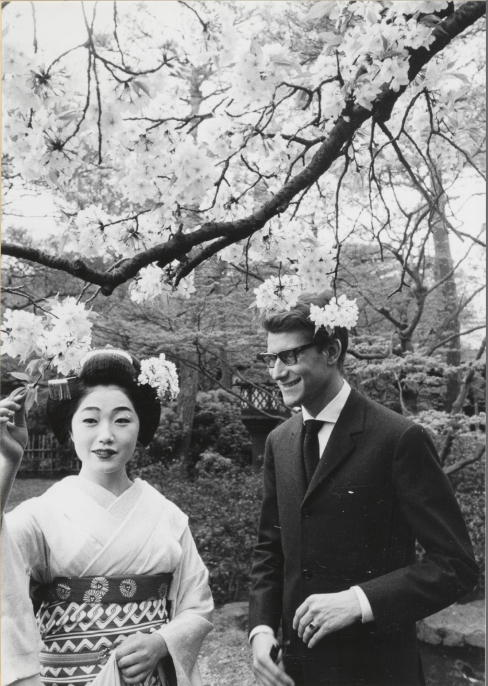
Yves Saint Laurent on his first visit to Japan in 1963. Courtesy museeyslparis.com
Art Influence
Saint Laurent loved art, and shared a large art and design collection with Bergé, which included works by Henri Matisse, Marcel Duchamp, Piet Mondrian, Pablo Picasso, Constantin Brancusi, Giorgio de Chirico, and more. They also collected animal heads from the Qing Dynasty. Bergé-Saint Laurent collection was auctioned off by Christie’s a year after the designer’s 2008 death, in 2009. The first night alone brought in $264 million, according to the New York Times.
Saint Laurent’s love for art was also evident in his clothing. For fall/winter 1965, Saint Laurent designed a shift dress with de Stijl abstractionist Mondrian’s color block painting on it. One 1988 couture show featured dresses inspired by Vincent Van Gogh’s sunflowers and irises.
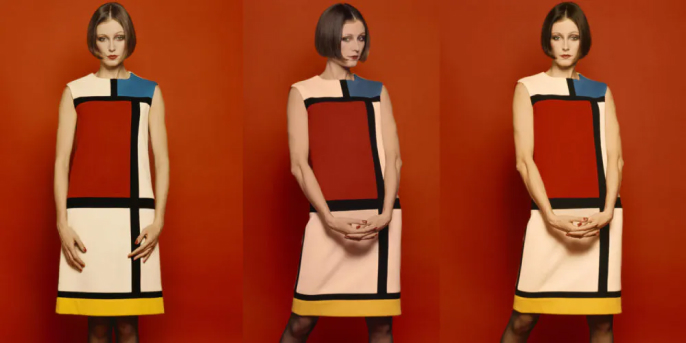
Yves Saint Laurent’s Mondrian dress. Courtesy L’Officiel.
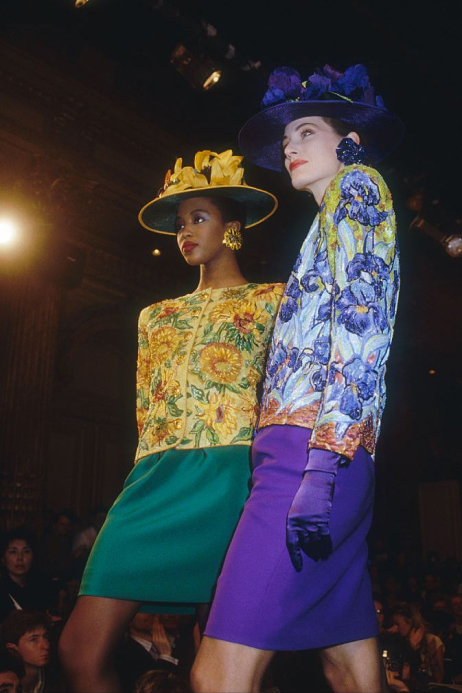
Yves Saint Laurent’s 1988 couture collection featured flower motifs by Vincent Van Gogh.

Looks inspired by Matisse and Picasso shown during Yves Saint Laurent’s final show in 2002. Courtesy The Art of Fashion.
Muses, Collaborators, and Celebrity Fans
Saint Laurent was influenced by a number of people, places, and things over years that shaped the brand identity of his fashion house. Two of his closest and most influential models and design partners were LouLou de la Falaise and Betty Cartroux. De la Falaise was his inspiration for the wilder side of the brand. An avid traveler and artist, she had an eccentric, boho style that capitalized on femininity and culture. A jewelry designer herself, De la Falaise was a designer that contributed greatly to the brand. On the other side of things, Betty Catroux was sophisticated, and her style was androgynous and mysterious. She modeled for the label frequently, embodying the allure of Le Smoking Suit to a tee.
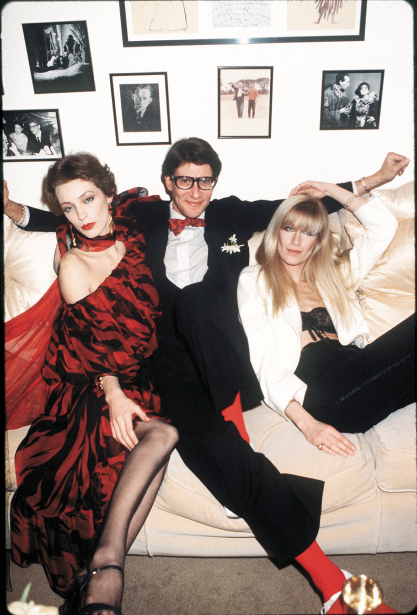
LouLou de la Falaise, Yves Saint Laurent, and Betty Catroux. Courtesy WWD.
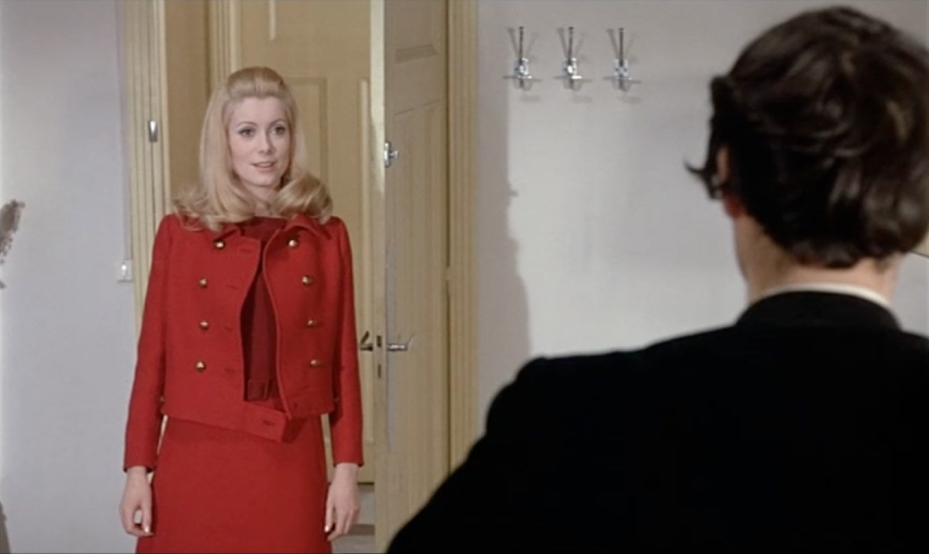
Catherine Deneuve in Belle de Jour. Courtesy Dazed.
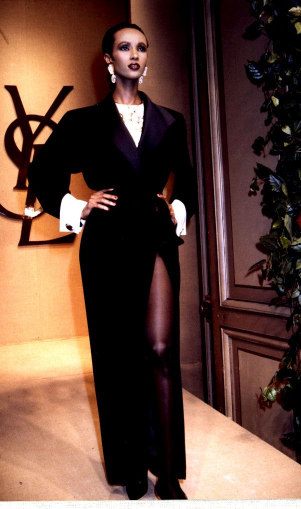
Iman for Saint Laurent Rive Gauche. Courtesy Pinterest.
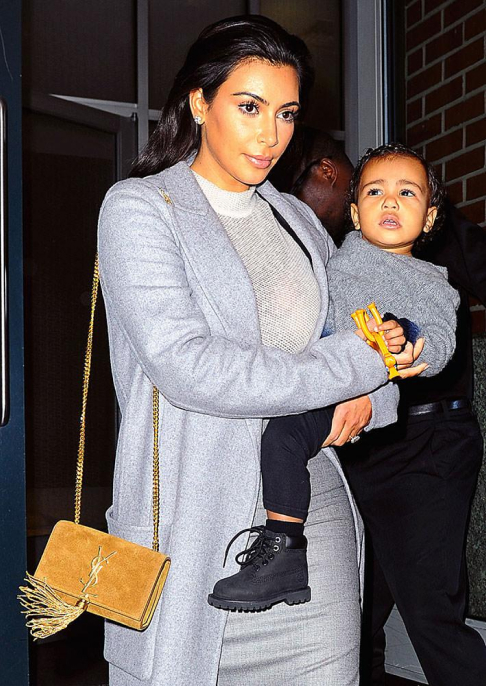
Kim Kardashian in a Kate bag. Courtesy BrandsBlogger.
Following In Saint Laurent’s Footsteps
Although Yves Saint Laurent officially stepped down from his eponymous house in 2002, a number of notable names in design helmed different sectors of the label. The late Alber Elbaz was charged with women’s ready-to-wear, which he designed for three seasons from 1998 to 1999. Bergé appointed Hedi Slimane director of collections and art director in 1997, and they relaunched YSL Rive Gauche Homme before Slimane left to lead Dior Homme in 1999. In 1999, when Gucci acquired a majority stake in the brand, Tom Ford led ready-to-wear, while Saint Laurent was in charge of designing the couture line. When Ford left to launch his own line in 2004, Italian designer Stefano Pilati took over, leading the brand through Saint Laurent’s death in 2008, until 2012 when Kering, Saint Laurent’s parent company, appointed Slimane as the label’s creative director. Slimane revived the brand, dropping Yves from its logo. He remained there until 2016, and it was announced that Anthony Vaccarello would lead the label. Vaccarello is the brand’s current creative director.
Saint Laurent Handbags
The first bags made by Saint Laurent emerged in a time period where the world’s outlook on handbags was in the midst of reshaping itself. After World War II and the industrial revolution, handbags took a turn away from their traditional roots which stemmed from equestrian equipment, and Yves Saint Laurentw was a trailblazer in this reimagination. YSL and other houses at the time were translating the handbag norm of elegance into a cooler, edgier aesthetic that gave fashion and sexiness a darker twist. This concept undoubtedly applied to Saint Laurent’s handbags, but the category itself wasn’t of as much interest to the designer himself as other components of his collections, like jewelry. Handbags were never the focal for YSL lines, unlike other brands that would sometimes even create a collection that surrounded a single handbag. According to the book, Yves Saint Laurent Accessories, Saint Laurent did not pay the same attention to handbags that the rest of the luxury world did, or still does at times today. In the ‘60s and early ‘70s, handbags at YSL were made by a few different suppliers using materials selected by Saint Laurent such as moroccan leather, snakeskin, lizard, and even straw and tortoise skin. The actual creators that cultivated the handbag lines at YSL were Madame Leroux and Madame Perrin, who had quite imaginative designs that modeled handbags after the unordinary like books and adorning them with horns or printing furs to look like panther print. Hardware pieces such as chains from past jewelry lines were recycled into handbag lines in later collections. The two designers created various textures in accordance with current trends and would cut, pierce, and perforate materials to accentuate the themes of the lines.
Although Saint Laurent is not as handbag-centric as other brands, these bags have drummed up a large amount of respect and desire in the luxury accessories industry because of what they represent The brand is currently popular for it’s key handbags that are easily recognizable on the street – the Sac de Jour is a popular bag that comes in an array of materials and colors from croc embossed leather to orange calfskin. The LouLou is a quilted crossbody that has become a staple in the luxury handbag realm, as well as the Kaia bag which comes in regular sizes as well as novelty minis. The handbags and clothes produced by Saint Laurent are indicative of an identity that reflects the cool left-bank style that YSL originally cultivated, which is still demanded today by the masses.
Saint Laurent Market Outlook
Overall, Saint Laurent is one of the most popular brands in the handbag resale market in recent years, especially those designs from Hedi Slimane, who was creative director 2012 to 2016, and its current creative director Anthony Vaccarello, who started in 2016. Due to its classic, yet chic styles and true Parisian spirit, many Saint Laurent bags can retain their value and sell at least 75 to 80 percent of the retail value at Rebag. According to Rebag’s buying team, the best selling Saint Laurent bags on the platform include Sac de Jour bag, Classic Monogram wallet on chain, LouLou shoulder bag, Classic Monogram Envelope satchel, and the Niki chain flap bag.
YSL Bags Size Reference
Materials/Hardware
Saint Laurent bags are made in a variety of materials, from leather and velvet, to linen, raffia, and canvas. Hardware ranges from silver to gold hues.

